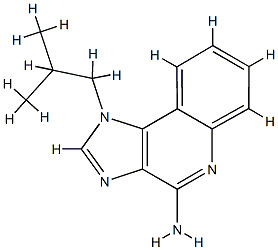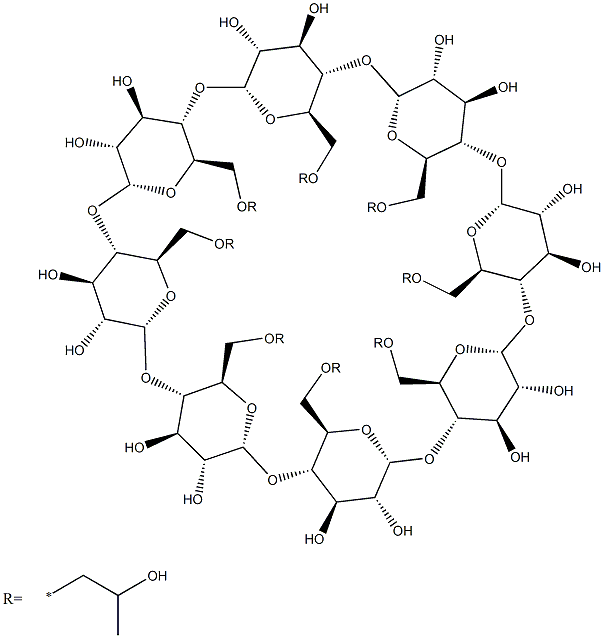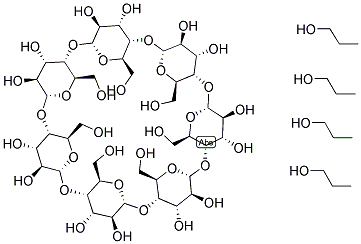Hydroxypropyl methylcellulose phthalate
- CAS NO.:9050-31-1
- Empirical Formula: C14H16N4
- Molecular Weight: 240.30364
- MDL number: MFCD00147216
- EINECS: 618-567-3
- SAFETY DATA SHEET (SDS)
- Update Date: 2025-12-17 09:50:40

What is Hydroxypropyl methylcellulose phthalate ?
Chemical properties
White to off-white free-flowing flakes or granules
Chemical properties
Hypromellose phthalate occurs as white to slightly off-white, freeflowing flakes or as a granular powder. It is odorless or with a slightly acidic odor and has a barely detectable taste.
The Uses of Hydroxypropyl methylcellulose phthalate
(Hydroxypropyl)methyl Cellulose Phthalate is a therapeutic compound and methods of colesevelam.
Production Methods
Hypromellose phthalate is prepared by the esterification of hypromellose with phthalic anhydride. The degree of alkyloxy and carboxybenzoyl substitution determines the properties of the polymer and in particular the pH at which it dissolves in aqueous media.
Definition
ChEBI: Imiquimod is an imidazoquinoline fused [4,5-c] carrying isobutyl and amino substituents at N-1 and C-4 respectively. A prescription medication, it acts as an immune response modifier and is used to treat genital warts, superficial basal cell carcinoma, and actinic keratosis. It has a role as an antineoplastic agent and an interferon inducer.
Pharmaceutical Applications
Hypromellose phthalate is widely used in oral pharmaceutical
formulations as an enteric coating material for tablets or
granules. Hypromellose phthalate is insoluble in gastric fluid
but will swell and dissolve rapidly in the upper intestine. Generally,
concentrations of 5–10% of hypromellose phthalate are employed
with the material being dissolved in either a dichloromethane : ethanol
(50 : 50) or an ethanol : water (80 : 20) solvent mixture.
Hypromellose phthalate can normally be applied to tablets and
granules without the addition of a plasticizer or other film formers,
using established coating techniques. However, the addition of a
small amount of plasticizer or water can avoid film cracking
problems; many commonly used plasticizers, such as diacetin,
triacetin, diethyl and dibutyl phthalate, castor oil, acetyl monoglyceride,
and polyethylene glycols, are compatible with hypromellose
phthalate. Tablets coated with hypromellose phthalate
disintegrate more rapidly than tablets coated with cellulose acetate
phthalate.
Hypromellose phthalate can be applied to tablet surfaces using a
dispersion of the micronized hypromellose phthalate powder in an
aqueous dispersion of a suitable plasticizer such as triacetin, triethyl
citrate, or diethyl tartrate together with a wetting agent.
Hypromellose phthalate may be used alone or in combination
with other soluble or insoluble binders in the preparation of
granules with sustained drug-release properties; the release rate is
pH-dependent. Since hypromellose phthalate is tasteless and
insoluble in saliva, it can also be used as a coating to mask the
unpleasant taste of some tablet formulations. Hypromellose
phthalate has also been co-precipitated with a poorly soluble drug
to improve dissolution characteristics.
Safety
Hypromellose phthalate is widely used, primarily as an enteric coating agent, in oral pharmaceutical formulations. Chronic and acute animal feeding studies on several different species have shown no evidence of teratogenicity or toxicity associated with hypromellose phthalate.Hypromellose phthalate is generally regarded as a nonirritant and nontoxic material.
Storage
Hypromellose phthalate is chemically and physically stable at ambient temperature for at least 3–4 years and for 2–3 months at 40°C and 75% relative humidity. It is stable on exposure to UV light for up to 3 months at 25°C and 70% relative humidity. Drums stored in a cool, dry place should be brought to room temperature before opening to prevent condensation of moisture on inside surfaces. After 10 days at 60°C and 100% relative humidity, 8–9% of carbyoxybenzoyl group were hydrolyzed. In general, hypromellose phthalate is more stable than cellulose acetate phthalate. At ambient storage conditions, hypromellose phthalate is not susceptible to microbial attack.
Incompatibilities
Incompatible with strong oxidizing agents.
Splitting of film coatings has been reported rarely, most notably with coated tablets that contain microcrystalline cellulose and calcium carboxymethyl cellulose. Film splitting has also occurred when a mixture of acetone : propan-2-ol or dichloromethane : propan- 2-ol has been used as the coating solvent, or when coatings have been applied in conditions of low temperature and humidity. However, film splitting may be avoided by careful selection of formulation composition, including solvent, by use of a higher molecular weight grade of polymer, or by suitable selection of plasticizer.
The addition of more than about 10% titanium dioxide to a coating solution of hypromellose phthalate, which is used to produce a colored film coating, may result in coating with decreased elasticity and resistance to gastric fluid.
Regulatory Status
Included in the FDA Inactive Ingredients Database (oral capsules and tablets). Included in nonparenteral medicines licensed in the UK. Included in the Canadian List of Acceptable Non-medicinal Ingredients.
Properties of Hydroxypropyl methylcellulose phthalate
| Melting point: | >145 °C (dec.)(lit.) |
| Density | 0.6 g/mL at 25 °C(lit.) |
| solubility | H2O: Limited solubility at low pH, soluble at pH ≥4.2.soluble |
| form | neat |
| Stability: | Stable under recommended storage conditions., Stable Under Recommended Storage C |
| CAS DataBase Reference | 9050-31-1(CAS DataBase Reference) |
| EPA Substance Registry System | Cellulose, hydrogen 1,2-benzenedicarboxylate, 2-hydroxypropyl methyl ether (9050-31-1) |
Safety information for Hydroxypropyl methylcellulose phthalate
Computed Descriptors for Hydroxypropyl methylcellulose phthalate
New Products
4,4-Difluoropiperidine hydrochloride tert-butyl 9-methoxy-3-azaspiro[5.5]undecane-3-carboxylate Indole Methyl Resin N-Isopropylurea N,N-Dicyclohexylcarbodiimide(DCC) MELDRUMS ACID 5-METHYLISOXAZOLE-4-CARBOXYLIC ACID Magnessium Bis glycinate Zinc ascorbate 1-bromo-2-butyne 2-acetamidophenol 9(10H)-anthracenone Erythrosin B, 4-Piperidinopiperidine 2-((4-morpholinophenylamino) (methylthio) methylene) malononitrile 2,4-dihydroxybenzaldehyde 3-(4-morpholinophenylamino)-5-amino-1H-pyrazole-4-carbonitrile Methyl 2-methylquinoline-6-carboxylate 2,6-dichloro-4-nitropyridine 4-Bromo-2-chlorobenzonitrile 2-(benzylamino)acetic acid hydrochloride 4-(tert-Butoxycarbonylamino)but- 2-ynoic acid 3,4-dihydro-2H-benzo[b][1,4]dioxepine 1-Phenyl-1-cycloprppanecarboxylicacidRelated products of tetrahydrofuran








You may like
-
 9050-31-1 Hydroxypropyl methylcellulose phthalate 98%View Details
9050-31-1 Hydroxypropyl methylcellulose phthalate 98%View Details
9050-31-1 -
 9050-31-1 99%View Details
9050-31-1 99%View Details
9050-31-1 -
 9050-31-1 Hydroxypropyl methylcellulose phthalate 99%View Details
9050-31-1 Hydroxypropyl methylcellulose phthalate 99%View Details
9050-31-1 -
 Hydroxypropyl methyl cellulose phthalate CAS 9050-31-1View Details
Hydroxypropyl methyl cellulose phthalate CAS 9050-31-1View Details
9050-31-1 -
 Hypromellose phthalate CAS 9050-31-1View Details
Hypromellose phthalate CAS 9050-31-1View Details
9050-31-1 -
 20677-73-0 (2,2-diethoxyethyl)methylamine 98%View Details
20677-73-0 (2,2-diethoxyethyl)methylamine 98%View Details
20677-73-0 -
 3-(4-(hydroxyamino)-1-oxoisoindolin-2-yl)piperidine-2,6-dione 98%View Details
3-(4-(hydroxyamino)-1-oxoisoindolin-2-yl)piperidine-2,6-dione 98%View Details -
 57381-49-4 2-bromo-4-chlorobenzonitrile 98%View Details
57381-49-4 2-bromo-4-chlorobenzonitrile 98%View Details
57381-49-4
